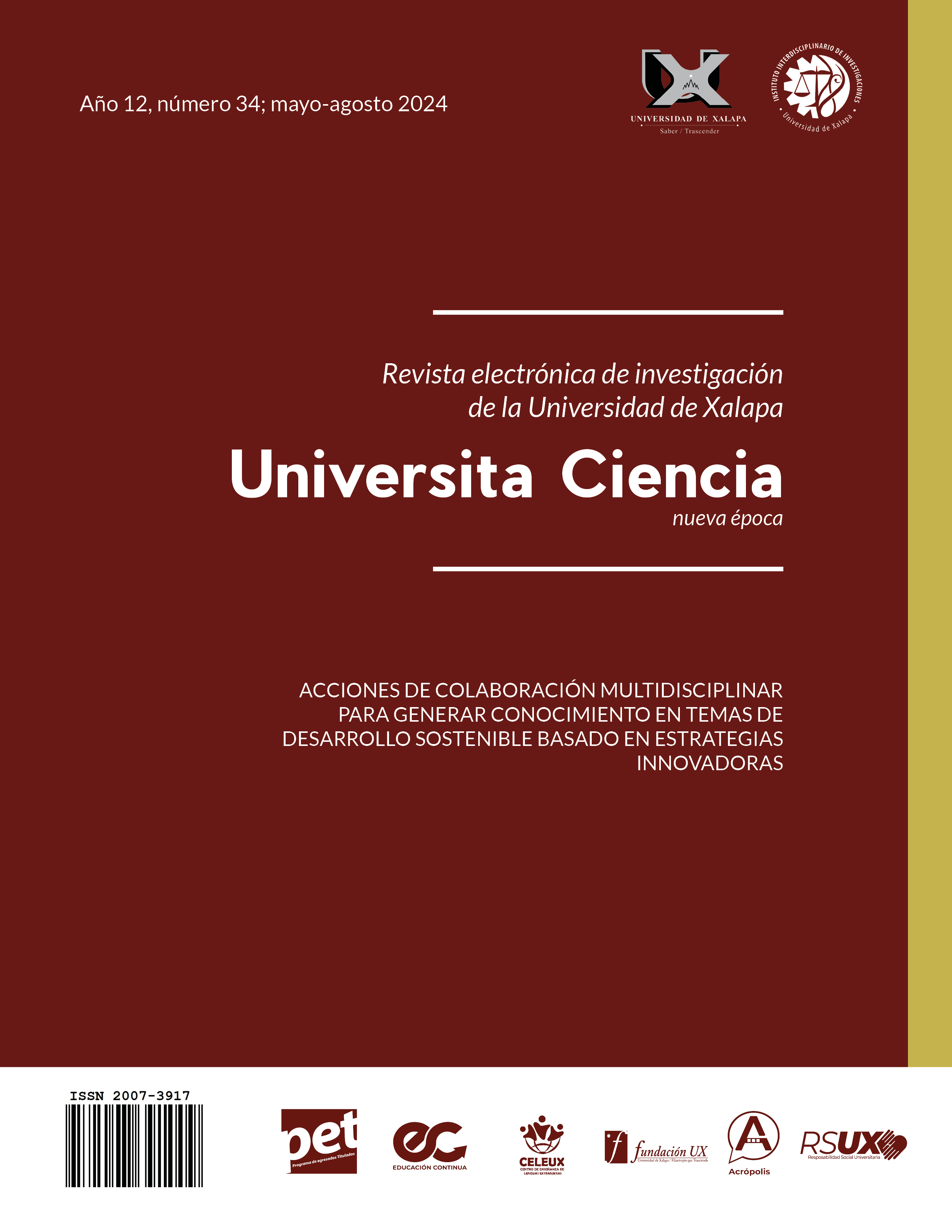Analyzing the unequal regional urban economy: Classification of the heterogeneity of the Metropolitan Area of Xalapa under the territory and economic dispersion
DOI:
https://doi.org/10.5281/zenodo.13333625Keywords:
ciudad, economia urbana, urbanometriaAbstract
City and the territory present quite broad and complex intellectual challenges that belong to the study in the discipline of urban planning. However, it isn’t intended to detract from the works, techniques and methodologies, but to show that the help of a disciplinary dialogue provides the researcher in urban planning and the student to visualize urban phenomena from another perspective and maintain a different vocabulary that allows validating the studies in the territory.This work aims, in the first instance, to reflect, question and induce the reader to a way of visualizing urban planning with a view to expressing what is happening in the territory in a measurable and quantitative way and that gives an articulated discourse to urban expression under the search for new hybrid tools that help direct urban study procedures through the principles of generating urbanometrics in research.The second objective is to present a statistical model that shows the relationship applied between economic units and size of the territory in the Xalapa’s Metropolitan area whose purpose is to demonstrate that urban phenomena can be measured under statistical techniques validated in conjunction with research in urban planning.Keywords: City, Urbanometrics, Regional Economic
Metrics
References
Aguilar, A. G., Gratzbord, B., & Sánchez Crispín, A. (1996). Las ciudades intermedias y el desarrollo regional en México. Universidad Nacional Autónoma de México.
Anselin, L., & Rey, S. (2010). Perspectives on spatial data analysis. Springer.
Borsdorf, A. (2003). Cómo modelar el desarrollo y la Ciudad latinoamericana. Eure, XXIX(86), 37-49.
Bustelo, P. (1998). Teorías Contemporáneas del Desarrollo Económico. Síntesis.
Bustos Gisbert, M. L. (1993). Las Teorías de la Localización Industrial: una breve explicación. Estudios Regionales, 51-76.
Camagni, R. (1993). Principi di economia urbana e territoriale. Carocci editore.
Camagni, R. (2004). Economía urbana. Antoni Bosh.
Carrollo Limeres, C. (2020, 3 de mayo). Departamento de estatistica e investigación operativa. http://eio.usc.es/eipc1/BASE/BASEMASTER/FORMULARIOS-PHP-DPTO/MATERIALES/Mat_50140116_Regr_%20simple_2011_12.pdf
Cleveland, W. S. (2001). Data science: an action plan for expanding the technical areas of the field of statistics. International Statistical Review / Revue Internationale de Statistique. 21-26.
CONAPO SEDESOL INEGI. (2012). Delimitación de las zonas metropolitanas de México 2010. Secretaría de Desarrollo Social, Consejo Nacional de Población e Instituto Nacional de Estadística y Geografía. http://www.conapo.gob.mx/es/CONAPO/Delimitacion_zonas_metropolitanas_2010_Capitulos_I_a_IV
De la Fuente Fernández, S. (2011). Análisis de conglomerados. https://estadistica.net/Master-Econometria/Analisis_Cluster.pdf
De Moura Pires, M.; Rubiera Morollón, F.; Da Silva Gomes, A., & Polése, M. (2018). Economia Urbana e Regional; território, cidade e desenvolvimento. Bahia. Editus.
Ducci, M. E. (1989). Conceptos básicos de urbanismo. Trillas .
Gómez Orea, D. (2002). Ordenación Territorial. Editorial Agrícola Española , S.A.- Mundi Prensa.
Hayashi, C. (1998). Studies in Classification. Data Analysis and Knowledge Organization. 40-51.
Isard, W. (1971). Métodos de Análisis Regional. Introducción a la ciencia regional. Ariel.
Johnson, J. (1974). Geografía Urbana. Oikos_tau.
Maldonado, C. (2015, 23 de febrero). Introducción al pensamiento científico de punta. https://www.youtube.com/watch?v=ojzVLq6zn0o&t=2573s
Mayor Fernandez, M., & Hernández Muñiz, M. (2000). Una aproximacion al gradiente de densidad de población (U. d. Oviedo, Ed.) Anales de Economía Aplicada, 2. http://www.asepelt.org/ficheros/File/Anales/2000%20-%20Oviedo/Trabajos/PDF/161.pdf
Ojeda Ramírez, M. M. (2000). Modelación de regresión. Universidad Veracruzana.
Personal.us.es. (s.f.). Personal.us.es. https://personal.us.es/vararey/adatos2/correlacion.pdf
Polése, M., & Rubiera Morollón, F. (2004). Economía Urbana y Regional; Introducción a la geografía económica. Aranzadi.
Quintero Pérez, J. A. (2009). Definición y origen de los sistemas de información geográfica. Conceptos de Geomática y estudios de caso en México, Geografía para el siglo XXI. Instituto de Geografía, UNAM, México.
Richardson, H. (1986). Economía regional y urbana. Alianza Editorial.
Rosales Tapia, A. R., & Quintero Pérez, J. A. (2013). Modelo de dependencia espacial aplicado al análisis de la distribución del consumo de alcohol en el campus CU, UNAM. Investigaciones geográficas (82), 104-117.
SEDATU, CONAPO & INEGI. (2015). Delimitación de las zonas metropolitanas de México 2015. México.
Sobrino, J. (2003). Delimitación de las zonas metropolitanas de México en 2000. La delimitación de zonas metropolitanas, México. CONAPO/SEDESOL/INEGI/Instituto de Geografía-UNAM.
Von Bertalanfy, L. (2018). Teoría general de los sistemas Fundamentos, desarrollo, aplicaciones. Fondo de Cultura económica.
W. Richarson, H. (1973). Economía Regional; Teoría de la localización, estructuras urbabas y crecimiento regional. Vinvens-Vives.
Published
How to Cite
Issue
Section
License

This work is licensed under a Creative Commons Attribution-NonCommercial-ShareAlike 4.0 International License.
This journal adheres to the Creative Commons license in the definition of its policy of open access and reuse of published material, in the following terms:
- Accessibility to articles and other publications in whole or in part under the concept of copying, distribution, public communication , interactive access (through the Internet or other means), explicitly maintaining the recognition of the author or authors and the journal itself (authorship acknowledgment).
- Warning that if the articles are remixed, modified or fragments used in other creations, the modified material cannot be distributed, nor is it allowed to reconstruct versions from the original published articles (derived works).
- The use of the contents of the published articles, in whole or in part, for profit (non-commercial recognition) is prohibited.
The author retains copyright, transfers or grants exclusive commercial rights to the publisher, and a non-commercial license is used.














